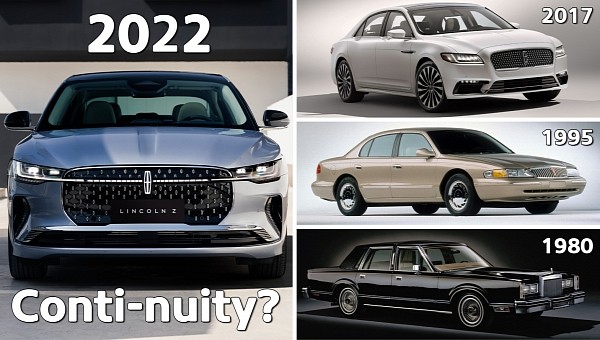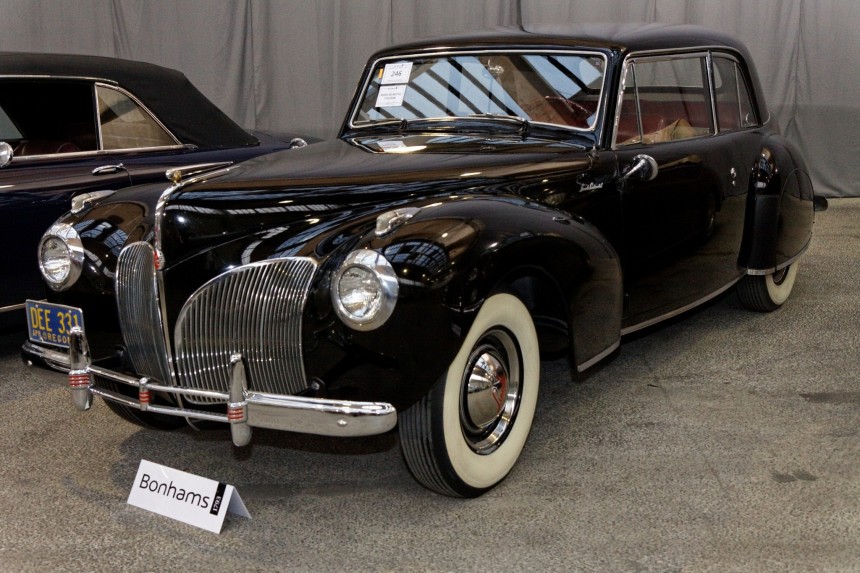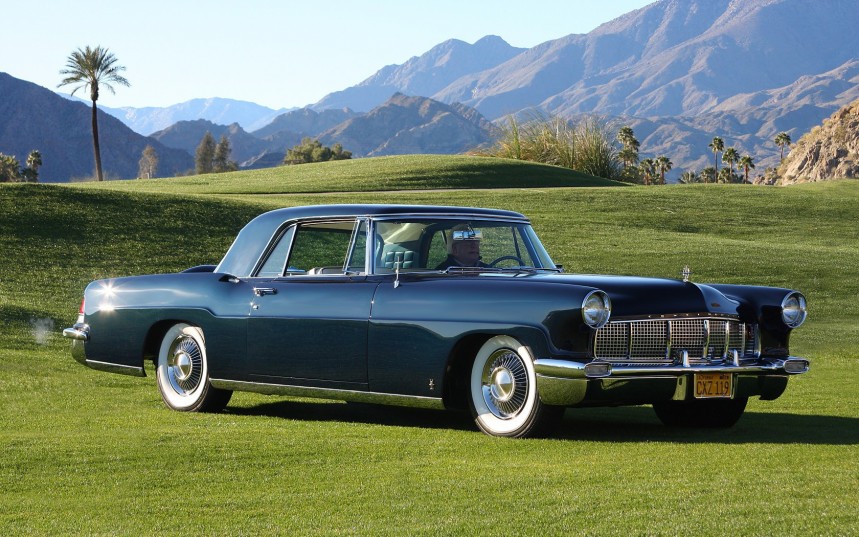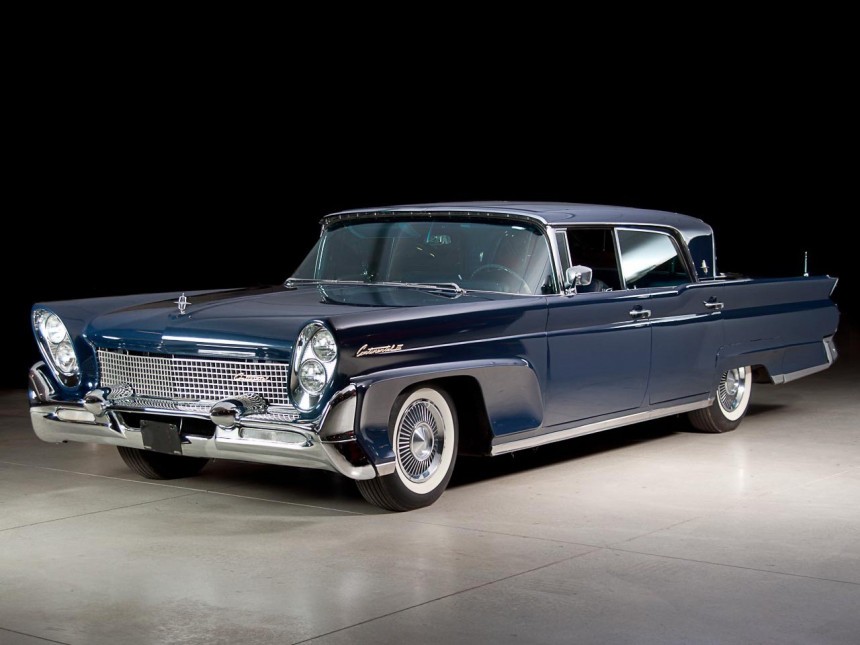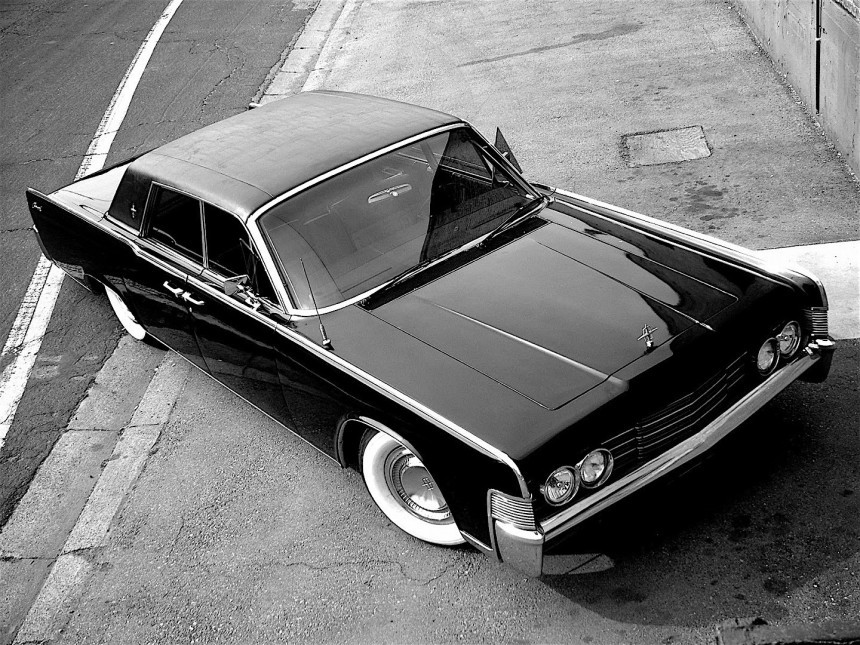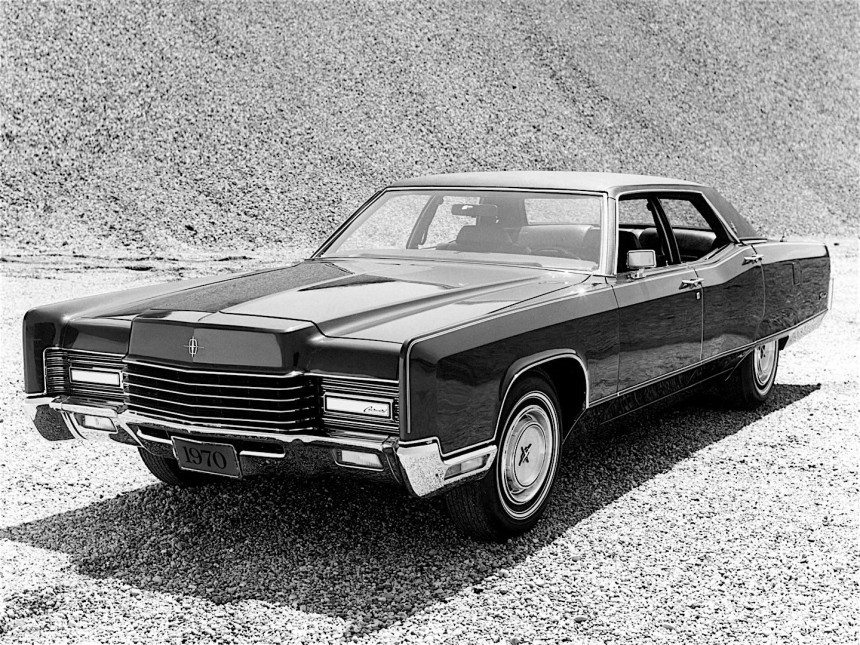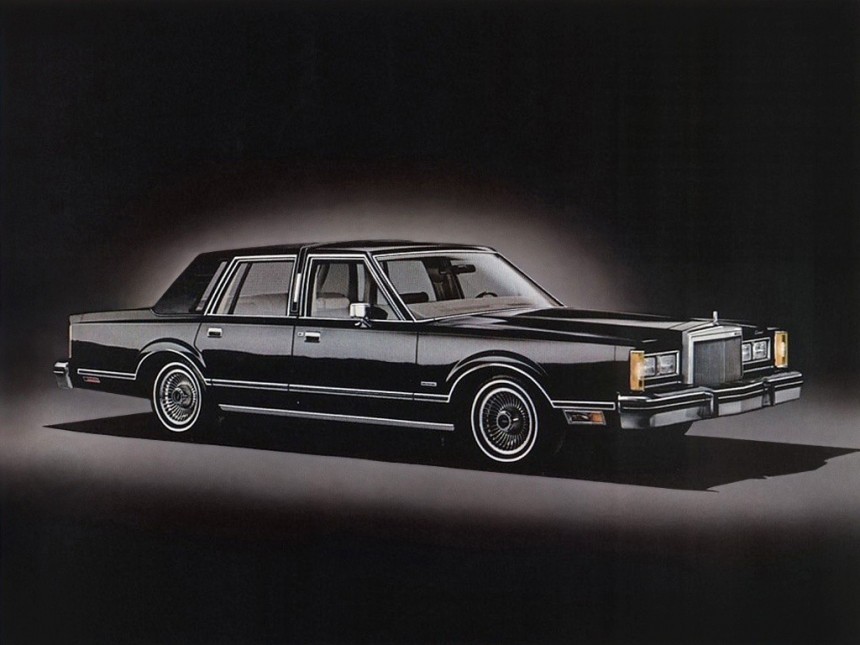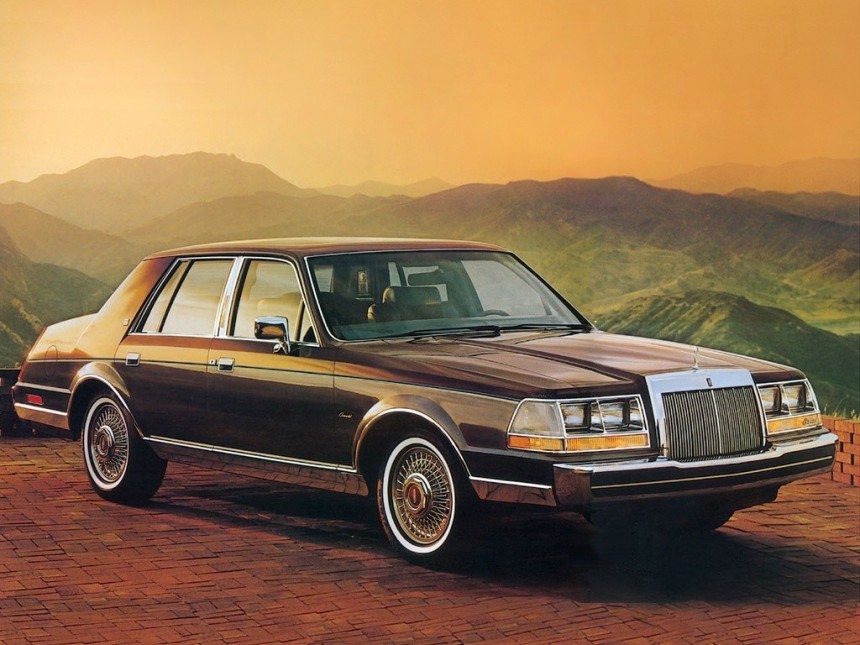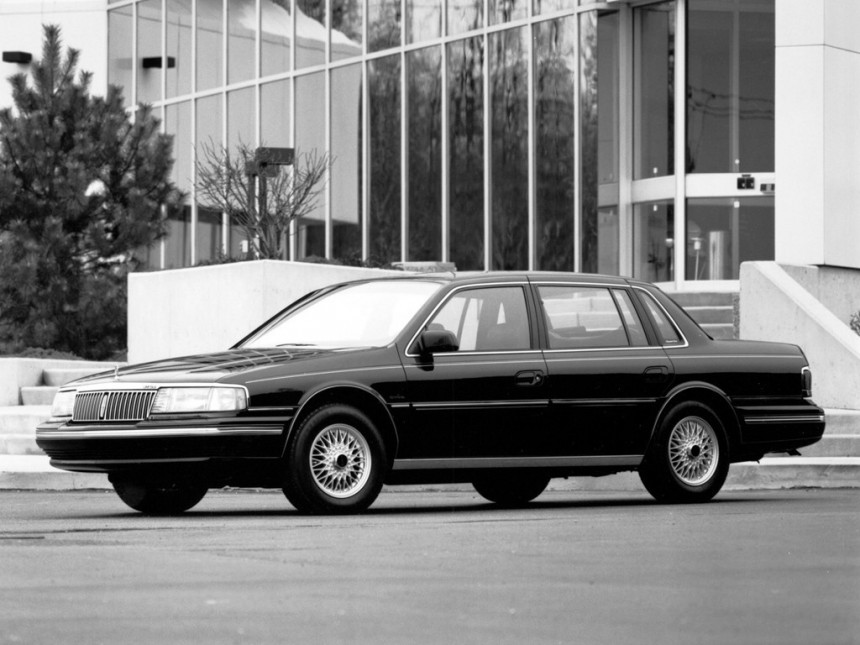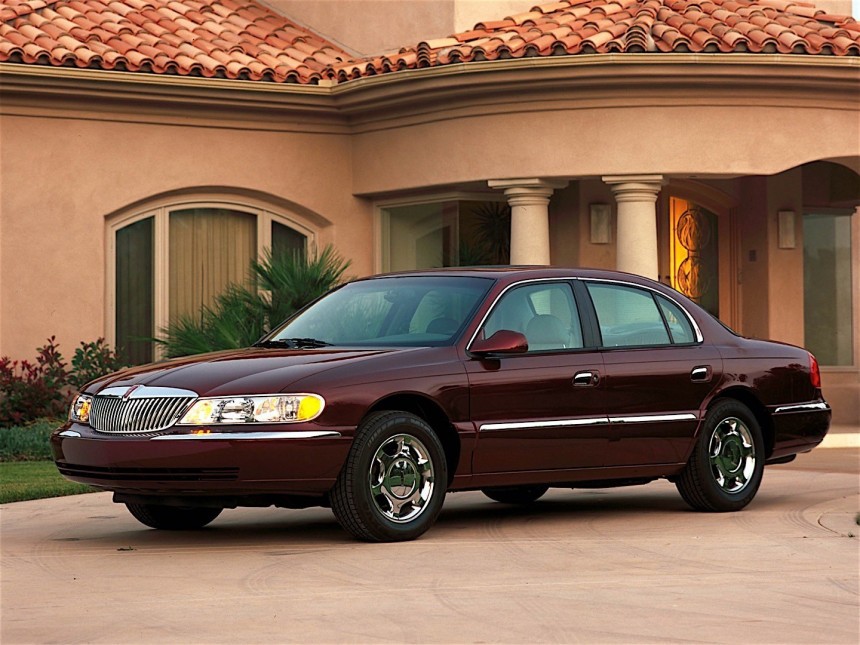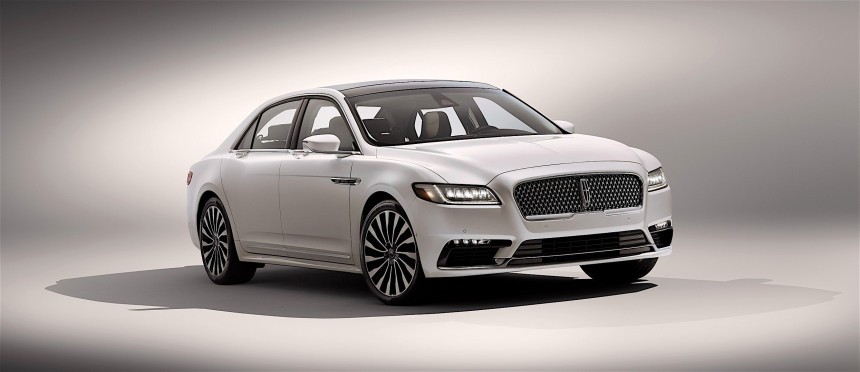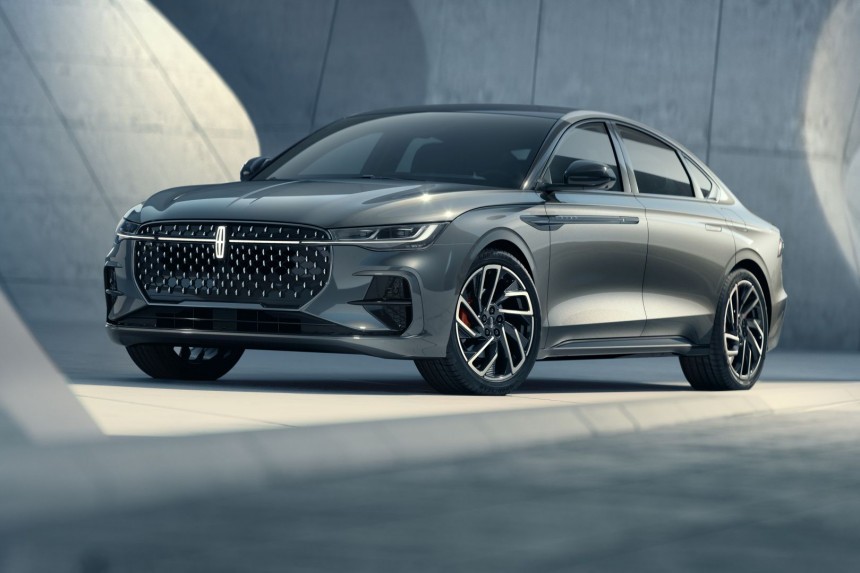The origins of the Lincoln Continental can be traced back to the 1939 Lincoln-Zephyr convertible built for Edsel Ford, the son of Henry Ford. The name was derived from the design adorned with European "continental" styling elements. Ten generations have been produced from 1939 to 2020, while the derivative Continental Mark Series also ran for seven generations.
The Lincoln Continental can be considered the one that invented the personal luxury car concept. Its history is complicated, with Lincoln and Continental names combining and diverging several times. The model line was produced for over 55 years, and Lincoln has had ten generations of the Continental. The name also served different roles in the Lincoln lineup, ranging from flagship to base-trim sedan.
From 1961 to 1976, Lincoln also sold the Continental as a standalone brand. Ford had bigger ambitions in the luxury segment, and from 1969 also created the Continental Mark Series as a direct successor to the original Mark II (1956-1957). The move was meant to counter the Rolls-Royce Silver Shadow (later renamed Cornich) being introduced in the U.S. In September 1965, Ford vice-president Lee Iacocca instructed the Ford design team to "put a Rolls-Royce grille on a Thunderbird." This marked the reboot of the Continental Mark Series.
The Mark Series developed seven successive generations of the luxury model line until 1998. The use of the Continental and Mark series nameplates has always been confusing. Ford only cleared the waters for the 1986 model year when it renamed the Continental Mark VII as the Lincoln Mark VII. We will not dive into the Mark Series today but follow the original Lincoln Continental model tree instead, which is no less interesting.
The design introduced several long-running features that were later used in many American automobile designs. One was the modified proportions, with a hood line sitting lower over the V12 engine, almost at the same level as the front fenders. The long hood, short deck configuration also left a smaller trunk space, which dictated that the spare tire be mounted behind the trunk.
The prototype was produced on time in 1939, and Edsel's friends showed interest in the design. Ford's boss thought they could easily sell a thousand of them and ordered series production. That's when the Continental name was penned.
Ford built two dozen units in 1939 and 400 in 1940 with hand-hammered body panels. The cars built until 1941 largely shared the same body design as the prototype, and the Continental received only minor updates. Dies for machine pressing were added from 1941, and the Continental received more squarish fenders and a revised grille for the 1942 model year.
The war stopped 1942 production, and the Continental returned only in 1946. In the meantime, Edsel Ford died in 1943, and Ford was reorganized. Raymond Loewy designed the first post-war model following the departure of Eugene Gregorie.
1948 was the last model year for the Continental, as Ford decided to develop the 1949 model line as a souped-up version of the Mercury. Lincoln no longer wished to pursue the personal luxury car, so the name was dropped. It would take another eight years to return, this time as a standalone division within Ford.
Ford created the Continental Division in 1956 to slot above Lincoln as the flagship marque. The ultra-luxury Continental Mark II was a direct successor of the 1940-1948 Lincoln Continental. It was also the only product line ever marketed by the Continental brand and the first of the famed Mark Series.
The Continental Mark II was the most expensive American-produced car at the time, costing about $10,000. This is today's equivalent of over $100,000. While technically not a Lincoln, the Continental Mark II marked the return of the personal luxury car that the first Lincoln Continental pioneered.
Ford's best coachbuilders assembled each car by hand, with no effort spared, to turn the Continental Mark II into the most luxurious vehicle on Earth. That was also its main problem, as Ford reportedly lost nearly $1,000 with every example produced. When Ford went public in 1956, the Continental Mark II was the first project killed. This explains the short production run and the Continental Division's demise.
With the Continental division integrated into Lincoln-Mercury in July 1956, the third generation was all about profitability. It retains its Continental branding, but Ford may have exaggerated with the Mark naming. Despite only minor design changes, the Continental Mark III was renamed Mark IV in 1959 and Mark V in 1960.
Lincoln added two more body styles, the Limousine and the Town Car, in 1959, the latter being the spark that ignited another great model series. The Mark III was also the first all-new unibody design after WWII and one of the largest sedans ever produced in the U.S.
The main change of this generation is its selling price, which was 40% lower than the luxurious Continental Mark II. This made it play in the lower luxury league, next to the Cadillac Eldorado and Imperial LeBaron. The production was optimized to achieve the needed cost cuts by integrating the model more closely with the Lincoln lineup.
Smaller, cheaper, and more efficient were the guidelines for the new Lincoln Continental, which returned to its original name with this generation. Lincoln Division was bleeding money, and the Continental was the only model left in the lineup. The new generation was 15 inches shorter overall than the model it replaced.
To reduce costs, the Continental would have a much longer model cycle, at eight years instead of three as Ford and Mercury models. The Continental was now riding on a stretched chassis of the 1961 Ford Thunderbird and had only one engine option, the 430 cu-in (7.0-liter) V8 carried over from the Mark V. The Lincoln Continental received a new 460-inch (7.5-liter) engine in 1969, when the confusingly-named Continental Mark III started its career.
Although this generation lasted nine years on the market, Ford still operated design changes, first in 1964 and later in 1966. This generation is mostly known for its suicide-door design, used for the first time in a Lincoln since 1951. President Kennedy was shot in a modified 1961 Lincoln Continental convertible. The car was refurbished and used later by President Johnson. It is now in the Henry Ford Museum in Dearborn, Michigan. The Secret Service also acquired a 1969 model for President Nixon.
This was the moment when Ford again divorced the Lincoln and Continental brands, with the Lincoln Continental continuing its career one year after the introduction of the Continental Mark III. The return of the Mark III name is confusing after Mark V, but it was necessary to emphasize its connection with the legendary Mark II.
The Lincoln Continental reverted to body-on-frame construction, adopting a longer-wheelbase version of the Mercury Marquis platform. The suicide rear doors had to go as a consequence, but the power-actuated headlights were introduced after they proved successful on the Continental Mark III.
The fifth-generation Lincoln Continental remained the largest mass-market automobile produced in the world after 1977 when General Motors and Chrysler downsized their full-size models. Ford and Mercury followed suit in 1979, so the Lincoln Continental was the last traditional large sedan in the U.S.
The Lincoln Continental underwent extensive downsizing after the introduction of the CAFE economy standard. The 1980 Lincoln Continental was also designed alongside the Continental Mark VI, sharing the same Ford Panther platform.
A massive reduction in curb weight and the introduction of a four-speed overdrive transmission made the Lincoln Continental the most fuel-efficient full-size car sold that year. It was the first time Lincoln beat Cadillac in this regard.
The Lincoln Continental was one of the most technologically advanced cars at the time. It was fitted with electronic fuel injection, computer-controlled engine management, a digital instrument panel, and a trip computer. Unfortunately, the nameplate was replaced with Town Car for the 1981 model year.
The Continental nameplate returned to the Lincoln lineup for the 1982 model year, this time as a mid-size car. This essentially marked the divorce between the Lincoln Continental and the Continental Mark VI and also left breathing room for the recently introduced Town Car. His main competitor was now the Cadillac Seville.
Instead of badge engineering, Lincoln designers took better care to differentiate the more expensive Continental from the Ford Granada and Mercury Cougar with which it shared the Fox platform. The Lincoln Continental later shared the wheelbase with the Continental Mark VII, introduced as a two-door coupe for the 1984 model year.
The seventh-generation Continental was the first Lincoln available with a V6, with a 3.8-liter powerplant offered as a no-cost option alongside the standard 5.0-liter V8. Both engines were replaced for the 1983 model year with the fuel-injected 5.0-liter V8 from the Town Car. This generation of the Continental was also the first to feature a diesel engine sourced from BMW in 1984.
In light of new competition entering the luxury segment from Germany and Japan, Lincoln completely overhauled the Continental for the 1988 model year. The model shared the unibody chassis with the Ford Taurus and the Mercury Sable, although it featured a unique body and interior design.
The eighth generation remains in history as the first Lincoln with front-wheel drive and also the first since 1948 sold without a V8 engine option. Instead, it was powered by the 3.8-liter V6 of the previous generation. The Continental was exclusively fitted as standard with adaptive air suspension and variable-assist power steering to compensate.
It was successful, too, with annual sales more than double that of the seventh generation. This helped Lincoln to achieve record sales in 1989 and again in 1990. Surely, the redesigned dashboard integrating two airbags as standard from the 1989 model year onwards helped. Back then, Ford was the only automaker in the U.S. (second worldwide after Porsche) to offer driver and front passenger airbags in standard.
Although marketed as a new generation, the 1995 Lincoln Continental was a merely (albeit substantially) restyled version of the previous generation. To its credit, the Continental brought the V8 back for the first time since 1987 in a move meant to counter Cadillac.
The V8 engine was part of Ford's Modular family, and, intriguingly, the Continental was the only production vehicle to feature this engine mounted transversally. Also, it was the only one to use it in a front-wheel drive configuration.
Despite the 1998 refresh, the Continental didn't impress in an increasingly competitive luxury market. Several special editions were offered to energize sales, including a Collector's Edition in 2002. As interest was still declining, Ford decided to axe the Continental in July 2002. Lincoln introduced the MKS in 2009 as the Continental spiritual successor, but the nameplate wouldn't last long.
In 2017, Ford decided to resurrect the Bentley Continental after a 14-year hiatus as the successor to the MKS. Built on top of Ford's CD4 platform shared with Ford Fusion and Lincoln MKZ, the tenth Continental was the first not built at Wixom Assembly Plant. Instead, it was assembled alongside the Ford Mustang in Flat Rock, Michigan.
Unlike its platform brethren, the Continental was powered exclusively by V6 engines, with power ranging from 305 horsepower to 400 horsepower. The latter came from a 3.0-liter unit with the highest specific power of any engine fitted to a Continental (133 horsepower per liter of displacement).
As iconic as it may have been, the Lincoln Continental was retired in 2020 after the tenth generation recorded disappointing sales. Slightly more than 60,000 units were produced from 2016 until 2021. Critics say the series lived on borrowed time since the 1980s, though.
There's no V6 this time, only a four-pot, 2.0-liter turbocharged engine with 243 horsepower. This is enough to offer decent performance, but still a far cry from what the best of Continental had to offer. It's not a Continental, after all, and we think Ford could've done a lot better.
We're not sure even this Lincoln Z will hang on more than a generation. Lincoln is sticking with its SUV-only strategy, which will continue into the EV era. We'd love to see the Continental nameplate return as a Tesla Model S competitor later, but chances are slim to none.
From 1961 to 1976, Lincoln also sold the Continental as a standalone brand. Ford had bigger ambitions in the luxury segment, and from 1969 also created the Continental Mark Series as a direct successor to the original Mark II (1956-1957). The move was meant to counter the Rolls-Royce Silver Shadow (later renamed Cornich) being introduced in the U.S. In September 1965, Ford vice-president Lee Iacocca instructed the Ford design team to "put a Rolls-Royce grille on a Thunderbird." This marked the reboot of the Continental Mark Series.
The Mark Series developed seven successive generations of the luxury model line until 1998. The use of the Continental and Mark series nameplates has always been confusing. Ford only cleared the waters for the 1986 model year when it renamed the Continental Mark VII as the Lincoln Mark VII. We will not dive into the Mark Series today but follow the original Lincoln Continental model tree instead, which is no less interesting.
The Edsel Ford prototype (1939): Where it all started
Legend says Ford commissioned a one-off design in 1938, and the company's chief stylist Eugene Gregorie used the Lincoln-Zephyr as the starting point. Gregorie reportedly completed the design of the convertible model in an hour. The idea was to revive the popularity of the 1929-1932 Lincoln Victoria vibe but with a modern twist, reflecting the European styling.The design introduced several long-running features that were later used in many American automobile designs. One was the modified proportions, with a hood line sitting lower over the V12 engine, almost at the same level as the front fenders. The long hood, short deck configuration also left a smaller trunk space, which dictated that the spare tire be mounted behind the trunk.
The prototype was produced on time in 1939, and Edsel's friends showed interest in the design. Ford's boss thought they could easily sell a thousand of them and ordered series production. That's when the Continental name was penned.
First generation (1940-1942, 1946-1948): From hand-hammered body to series production
The war stopped 1942 production, and the Continental returned only in 1946. In the meantime, Edsel Ford died in 1943, and Ford was reorganized. Raymond Loewy designed the first post-war model following the departure of Eugene Gregorie.
1948 was the last model year for the Continental, as Ford decided to develop the 1949 model line as a souped-up version of the Mercury. Lincoln no longer wished to pursue the personal luxury car, so the name was dropped. It would take another eight years to return, this time as a standalone division within Ford.
Second generation (1956-1957): Return of the Mark
The Continental Mark II was the most expensive American-produced car at the time, costing about $10,000. This is today's equivalent of over $100,000. While technically not a Lincoln, the Continental Mark II marked the return of the personal luxury car that the first Lincoln Continental pioneered.
Ford's best coachbuilders assembled each car by hand, with no effort spared, to turn the Continental Mark II into the most luxurious vehicle on Earth. That was also its main problem, as Ford reportedly lost nearly $1,000 with every example produced. When Ford went public in 1956, the Continental Mark II was the first project killed. This explains the short production run and the Continental Division's demise.
Third generation (1958-1960): Cutting costs
Lincoln added two more body styles, the Limousine and the Town Car, in 1959, the latter being the spark that ignited another great model series. The Mark III was also the first all-new unibody design after WWII and one of the largest sedans ever produced in the U.S.
The main change of this generation is its selling price, which was 40% lower than the luxurious Continental Mark II. This made it play in the lower luxury league, next to the Cadillac Eldorado and Imperial LeBaron. The production was optimized to achieve the needed cost cuts by integrating the model more closely with the Lincoln lineup.
Fourth generation (1961-1969): The presidential cars
To reduce costs, the Continental would have a much longer model cycle, at eight years instead of three as Ford and Mercury models. The Continental was now riding on a stretched chassis of the 1961 Ford Thunderbird and had only one engine option, the 430 cu-in (7.0-liter) V8 carried over from the Mark V. The Lincoln Continental received a new 460-inch (7.5-liter) engine in 1969, when the confusingly-named Continental Mark III started its career.
Although this generation lasted nine years on the market, Ford still operated design changes, first in 1964 and later in 1966. This generation is mostly known for its suicide-door design, used for the first time in a Lincoln since 1951. President Kennedy was shot in a modified 1961 Lincoln Continental convertible. The car was refurbished and used later by President Johnson. It is now in the Henry Ford Museum in Dearborn, Michigan. The Secret Service also acquired a 1969 model for President Nixon.
Fifth generation (1970-1979): Epic Split
The Lincoln Continental reverted to body-on-frame construction, adopting a longer-wheelbase version of the Mercury Marquis platform. The suicide rear doors had to go as a consequence, but the power-actuated headlights were introduced after they proved successful on the Continental Mark III.
The fifth-generation Lincoln Continental remained the largest mass-market automobile produced in the world after 1977 when General Motors and Chrysler downsized their full-size models. Ford and Mercury followed suit in 1979, so the Lincoln Continental was the last traditional large sedan in the U.S.
Sixth generation (1980): The short-lived revolution
A massive reduction in curb weight and the introduction of a four-speed overdrive transmission made the Lincoln Continental the most fuel-efficient full-size car sold that year. It was the first time Lincoln beat Cadillac in this regard.
The Lincoln Continental was one of the most technologically advanced cars at the time. It was fitted with electronic fuel injection, computer-controlled engine management, a digital instrument panel, and a trip computer. Unfortunately, the nameplate was replaced with Town Car for the 1981 model year.
Seventh generation (1982-1987): Going small
Instead of badge engineering, Lincoln designers took better care to differentiate the more expensive Continental from the Ford Granada and Mercury Cougar with which it shared the Fox platform. The Lincoln Continental later shared the wheelbase with the Continental Mark VII, introduced as a two-door coupe for the 1984 model year.
The seventh-generation Continental was the first Lincoln available with a V6, with a 3.8-liter powerplant offered as a no-cost option alongside the standard 5.0-liter V8. Both engines were replaced for the 1983 model year with the fuel-injected 5.0-liter V8 from the Town Car. This generation of the Continental was also the first to feature a diesel engine sourced from BMW in 1984.
Eighth generation (1988-1994): The modern revolution
The eighth generation remains in history as the first Lincoln with front-wheel drive and also the first since 1948 sold without a V8 engine option. Instead, it was powered by the 3.8-liter V6 of the previous generation. The Continental was exclusively fitted as standard with adaptive air suspension and variable-assist power steering to compensate.
It was successful, too, with annual sales more than double that of the seventh generation. This helped Lincoln to achieve record sales in 1989 and again in 1990. Surely, the redesigned dashboard integrating two airbags as standard from the 1989 model year onwards helped. Back then, Ford was the only automaker in the U.S. (second worldwide after Porsche) to offer driver and front passenger airbags in standard.
Ninth generation (1995-2002): The decline
The V8 engine was part of Ford's Modular family, and, intriguingly, the Continental was the only production vehicle to feature this engine mounted transversally. Also, it was the only one to use it in a front-wheel drive configuration.
Despite the 1998 refresh, the Continental didn't impress in an increasingly competitive luxury market. Several special editions were offered to energize sales, including a Collector's Edition in 2002. As interest was still declining, Ford decided to axe the Continental in July 2002. Lincoln introduced the MKS in 2009 as the Continental spiritual successor, but the nameplate wouldn't last long.
Tenth generation (2017-2020): The failed resurrection
Unlike its platform brethren, the Continental was powered exclusively by V6 engines, with power ranging from 305 horsepower to 400 horsepower. The latter came from a 3.0-liter unit with the highest specific power of any engine fitted to a Continental (133 horsepower per liter of displacement).
As iconic as it may have been, the Lincoln Continental was retired in 2020 after the tenth generation recorded disappointing sales. Slightly more than 60,000 units were produced from 2016 until 2021. Critics say the series lived on borrowed time since the 1980s, though.
The Lincoln Z (2022-present): The Chinese second revival
In 2020, Ford decided to turn the Lincoln into a crossover/SUV-only brand in the U.S. Still, it offered the Continental a successor, so to speak, but only in China. The Chinese Lincoln Z was introduced in 2022 as a replacement for the Lincoln MKZ and the Lincoln Continental, which were both imported to the Chinese market.There's no V6 this time, only a four-pot, 2.0-liter turbocharged engine with 243 horsepower. This is enough to offer decent performance, but still a far cry from what the best of Continental had to offer. It's not a Continental, after all, and we think Ford could've done a lot better.
We're not sure even this Lincoln Z will hang on more than a generation. Lincoln is sticking with its SUV-only strategy, which will continue into the EV era. We'd love to see the Continental nameplate return as a Tesla Model S competitor later, but chances are slim to none.
